Written by Scott Dallimore and Stephen Wolfe
As described in our August 30 blog entry, the 2017 Arctic field program also includes a terrestrial component, with Scott Dallimore and Stephen Wolfe from the GSC examining the coastal geology of the northern Yukon. For Scott and Steve, the field program is a bit of a trip down memory lane as they worked together on this coast 30 years ago.
In addition to providing logistics support for the Araon field program, they focused this year on observations of terrestrial landscape evolution in response to the ~2°C climate warming in that has been experienced in this area in the past three decades.
They also were looking for correlations between the marine and terrestrial geology, specifically examining evidence for glaciation that could have an origin from offshore ice shelves rather than terrestrial sources, and to record the character of marine sediments from the offshore that have been ice-thrusted and now reside in the cliff sections of parts of the Yukon Coast and on Herschel Island.
Araon returns to Hershel Island
At 6 p.m. local time on September 4, the Araon arrived at Herschel Island to offload marine mammal observers (MMOs) Rhonda Reidy and John and Dale Ruben. It was a rather majestic evening, with the Araon beautifully framed in front of the Barnes Mountain range. The ship held position about 1.5 miles offshore, and their able small boat crew brought the MMOs to the protected waters of Pauline Cove. Scott in particular was very pleased to see the Araon and boat crew as not being on the ship had been nagging at him a fair bit. All hands were very keen to briefly catch the flavour of historic Herschel Island and hear stories of the muskoxen that had been wandering along the shoreline just a few hours before they arrived.
They were also very pleased to report that the multichannel seismic program on the Araon was a terrific success. Aided by calm waters, excellent equipment, skilled operators and an absence of marine mammals (which we did not want to disturb) the program had met its research goals. Shortly after the crew transfer, Scott, Rhonda, John and Dale moved to Inuvik as a team by helicopter, arriving there at 11 p.m. in twilight conditions. The demobilization day also involved demobing all of the fuel drums that Scott and Steve had used over the past five days.
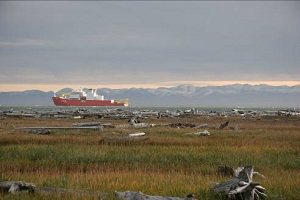
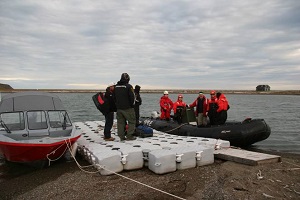
Photo 1: Araon stationed offshore of Herschel Island. Photo 2: Small boat crew on Hershel Island with a very happy Scott jumping on board the zodiac!
Photo highlights of the terrestrial geology program
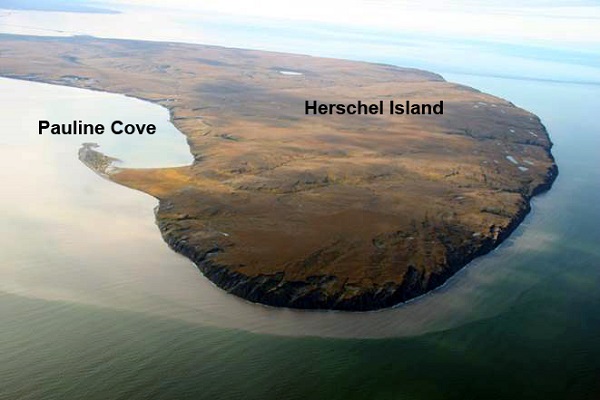
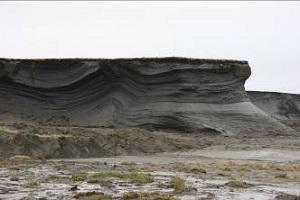
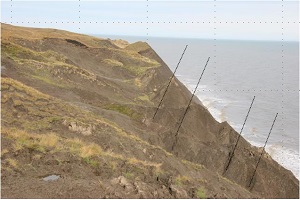
The north coast of Herschel Island is characterized by a sequence of tilted beds that form ridges on the surface of the island. The ridges are composed of marine sediments that are almost certainly similar to the sediments imaged at depth by the Araon during the multichannel seismic program. The terrestrial exposures give a rare glimpse at the sediment properties and character and the dip directions of the bedding sheds as well as insight into the glacial forces that caused them to be tilted. A fascinating aspect of the geology of Herschel Island and many other locales along the Yukon coast is that glacial ice is still present in the landscape. Large retrogressive thaw flow slides are now exposing this buried glacial ice and rapidly eroding the coastal landscape.
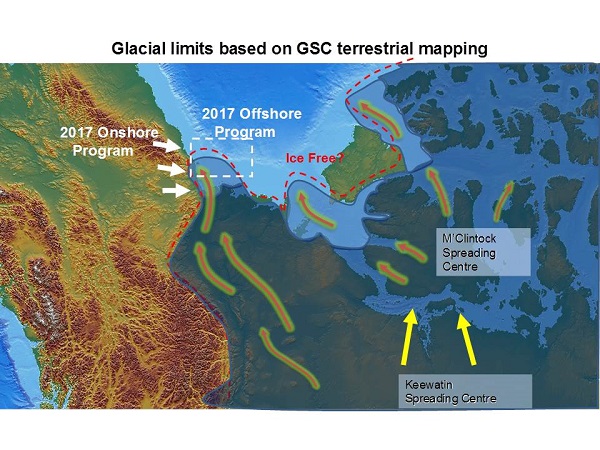
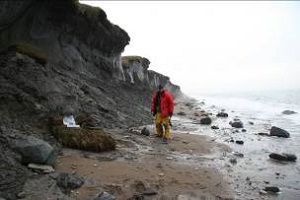
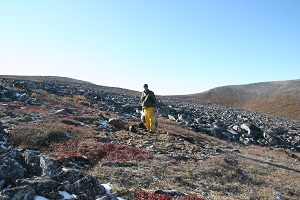
Photo 7: Coastal exposure at border between Yukon and Alaska. The sediments exposed at wave level are glacial in origin, with large cobbles and boulders derived from the Canadian shield. They were sampled and described to see if they are similar to those sampled offshore on the Araon.
Photo 8: Exposure at about 1,400m elevation in the Richardson Mountains northeast of Aklavik, Northwest Territories. Dallimore and Wolfe sampled and described sediments to see if the mountain tops had been glaciated.
Over the past five years, marine geology studies conducted by the research team on the Canadian Coast Guard Sir Wilfrid Laurier and the Korea Polar Research Institute (KOPRI) Araon have gathered evidence of glaciation in the offshore near the shelf/slope transition. These observations seem to indicate a marine record of glaciation that is different from interpretations derived from terrestrial mapping efforts. The 2017 field program included examination of terrestrial exposures all the way from the NWT–Yukon border to the Alaska border. Emphasis was placed on making observations beyond the so-called all-time glacial limit by flying in the helicopter upslope from the coastal plain to the mountain tops. We successfully sampled and characterized more than 20 field sites covering more than 200 km of coastline.
